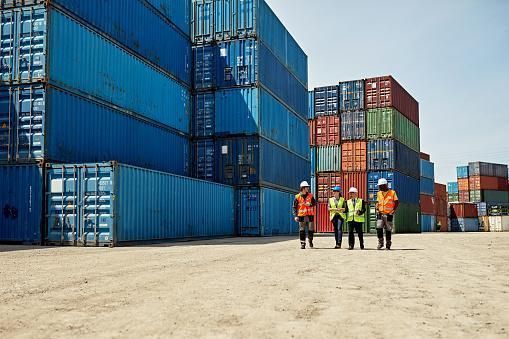How Long Does Sea Freight Take
When it comes to international shipping, sea freight is a popular and cost-effective option for businesses. However, one of the most common questions that arise is "how long does sea freight take?"
In this blog post, we'll cover everything you need to know about sea freight shipping times, including factors that can affect shipping times and how to estimate delivery dates.
Factors That Affect Sea Freight Shipping Times
Several factors can affect sea freight shipping times. Some of the most important factors include:
- Origin and Destination: The distance between the origin and destination of the shipment is one of the most important factors that affect sea freight shipping times. The farther the distance, the longer the shipment will take to arrive.
- Mode of Transportation: Sea freight can be transported on a variety of vessels, including container ships, bulk carriers, and roll-on/roll-off ships. The mode of transportation can affect shipping times, as different types of vessels have different speeds and schedules.
- Shipping Route: The shipping route can also affect shipping times. Some routes may have more frequent departures, while others may require longer transit times due to weather or other factors.
- Port Congestion: Port congestion can cause delays in shipping times. This can happen if there is a backlog of ships waiting to be unloaded or customs or other regulatory agencies are experiencing delays.
- Customs Clearance: Customs clearance can also affect sea freight shipping times. The clearance process can take several days or more, depending on the complexity of the shipment and the regulations in the destination country.
Read More:
Road Freight Transport Explained
How To Estimate Sea Freight Shipping Times
Estimating sea freight shipping times can be a complex process, but some general guidelines can help. Here are some steps to follow when estimating sea freight shipping times:
Determine The Route
The first step is to determine the route that your shipment will take. This will depend on the origin and destination of the shipment, as well as any stops that the shipment may make along the way.
Identify The Mode Of Transportation
Once you know the route, you can identify the mode of transportation that will be used. This will depend on the type of cargo being shipped and the available vessels.
Check Shipping Schedules
Check the shipping schedules for the vessels that will be used for the shipment. This will give you an idea of the departure and arrival times for each leg of the journey.
Consider Transit Time
Transit time is the amount of time that it takes for the shipment to travel from one port to the next. Transit time will depend on the distance between ports, as well as the speed of the vessel.
Account For Delays
Finally, it's important to account for potential delays. Port congestion, customs clearance, and other factors can all cause delays in shipping times. It's a good idea to build in some extra time to account for these delays.
Read More: Sea Freight Forwarding - All You Need To Know!
How Long Does Sea Freight Take?
Now that we've covered the factors that can affect sea freight shipping times and how to estimate delivery dates, let's take a look at some general guidelines for sea freight shipping times.
Short-Distance Routes
For short-distance routes, such as those within a single region or between neighboring countries, sea freight shipping times can be relatively short. Shipments may arrive within a week or two of departure, depending on the specific route and mode of transportation.
Long-Distance Routes
For longer-distance routes, such as those between continents or across oceans, sea freight shipping times can be much longer. Shipments may take several weeks or even months to arrive, depending on the specific route, mode of transportation, and any delays that may occur.
Container Shipping
Container shipping is one of the most common modes of sea freight transportation. Shipping times for container shipments can vary greatly, depending on the specific route and any delays that may occur. Generally speaking, container shipments may take anywhere from a few days to several weeks to arrive, depending on the distance traveled.
Weight And Size
The weight and size of a shipment are other factors that affects sea freight shipping times. Heavier and larger shipments will generally take longer to transport, as these types of shipments require more loading, unloading, and handling time. Additionally, some vessels may have limits on the weight or size of cargo that they can carry. As such, it's important to consider the weight and size of the shipment when estimating delivery dates.
Read More: What Are The Advantages Of Road Freight?
Ways To Save On Sea Freight Costs
Shipping goods via sea freight is often more cost-effective than other modes of transportation, but it can still be expensive. Here are some ways to save on sea freight costs:
Choose the Right Shipping Method: There are several types of sea freight shipping methods, such as container shipping, break bulk shipping, and roll-on /roll-off shipping. Choosing the right method can help you save on costs.
Reduce Packaging Costs: Packaging costs can help reduce overall sea freight costs. Minimizing the use of packing materials and lightweight containers can help reduce costs.
Use a Freight Forwarder: Working with a freight forwarder can help you get better rates on sea freight services. They can also help you navigate the complexities of international shipping regulations.
Overall, sea freight shipping times can vary greatly depending on the distance traveled, mode of transportation, and any delays that may occur. Short-distance routes may take a week or two to arrive, while long-distance routes may take several weeks or even months to arrive. Working with a freight forwarder and reducing packaging costs can help to reduce overall sea freight costs.
Final Words:
Sea freight shipping can be a great way to move goods over long distances, but it is important to consider the factors that can affect delivery times. Understanding the distance of the route, mode of transport, weight and size of the shipment, and potential delays are all important when estimating delivery dates. Additionally, working with a freight forwarder and reducing packaging costs can help to reduce overall sea freight costs.










